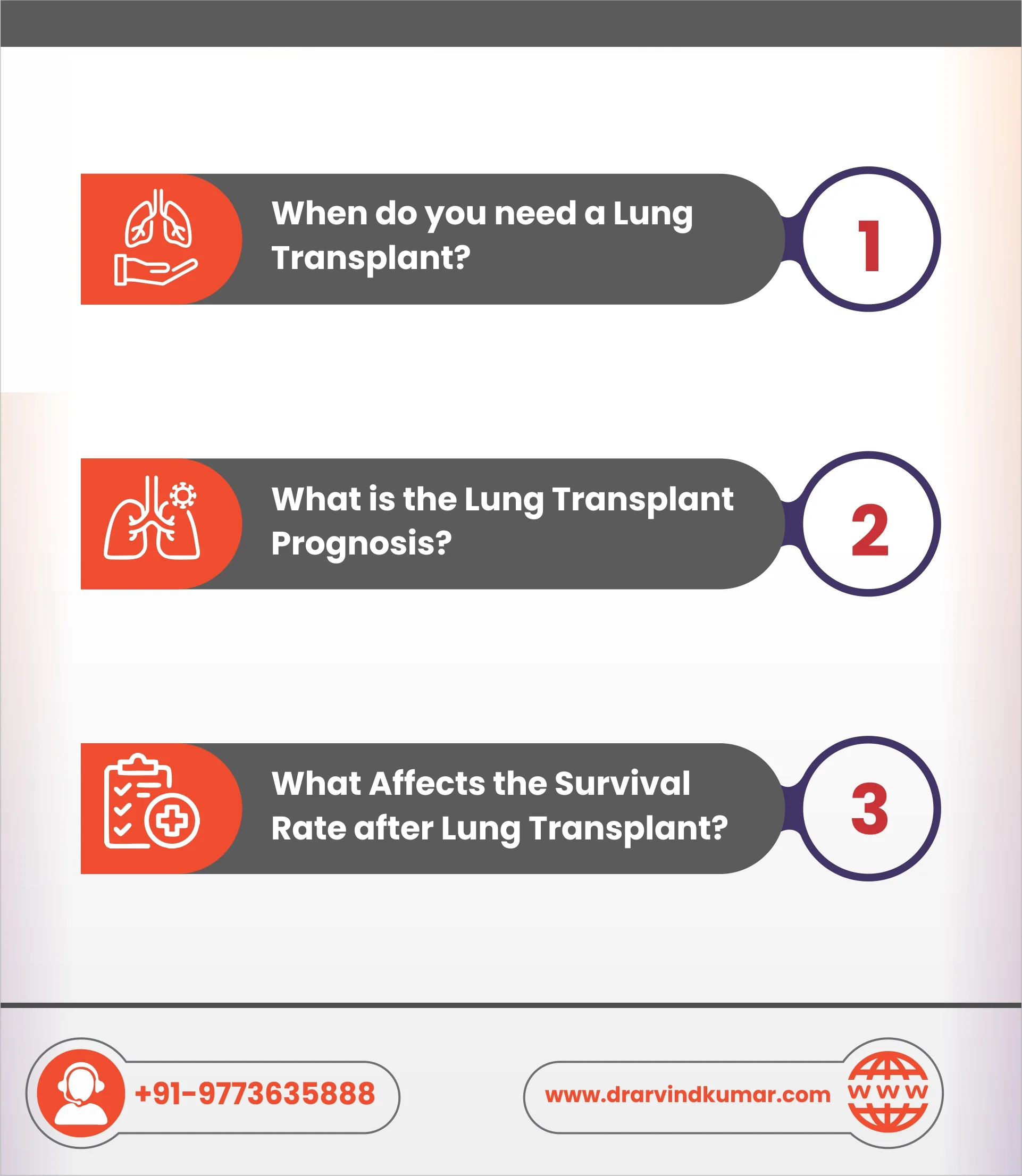Getting a diagnosis of lung cancer or end-stage lung disease is scary enough. Pairing a possibility of a lung transplant on top of that is bound to make every patient anxious with worry. Given how sensitive a lung transplant procedure is, it isn’t surprising that the very first question that people have in their mind is, “Will I Survive after a Lung Transplant?”
And, the answer is not black and white. It is futile to say yes or no to that question because there are several factors that influence the survival rate post-lung transplantation.
This article will explore everything you need to know about lung transplant survival rate and what factors influence it.
When do you need a Lung Transplant?
Lung transplant isn’t a “first-choice” procedure for patients. In fact, it is often kept as the last resort if nothing else is failing to support the patient’s quality of life.
Patients suffering from severe end-stage lung failure are the ones who qualify for a lung transplant. Now, keep in mind that there are two types of lung transplants – single or double transplants. What the patient gets depends on the severity of their condition.
Double or bilateral lung transplantation is more common in the present day since it has shown a better long-term prognosis for the patient.
A lung transplant is typically an option for patients who are suffering from end-stage lung disease or lung failure due to conditions like:
- Chronic obstructive pulmonary disease (COPD)
- Idiopathic pulmonary diseases
- Cystic Fibrosis
- Idiopathic pulmonary arterial hypertension (PAH)
Depending on the severity and urgency of the situation, a patient’s eligibility is checked, and then they undergo the transplantation procedure to improve their quality of life.

What is the Lung Transplant Prognosis?
Lung transplant life expectancy is very dicey. It heavily depends on the age of the patient, along with many other factors.
If you want a clearer and more realistic picture, it is believed that around 80% of patients survive one year after their lung transplant. Around 55-70% survive 3+ years, and 40-50% of patients survive 5 years and above.
These numbers might not seem very encouraging at the moment, but as medicine is advancing, so are the treatment options for the patients.
What Affects the Survival Rate after Lung Transplant?
Survival after lung transplantation depends on various factors:
Rejection
One of the biggest issues or post-transplant complications is tissue rejection. This is one of the primary reasons the patient is put on heavy doses of immunosuppressants to ensure that their body doesn’t reject the newly transplanted lungs.
Rejection is a very common risk associated with lung transplantation that Dr. Arvind and his team at Medanta clearly discuss with each patient before finalizing the procedure.
Since the donors lungs are technically a “foreign” object for the recipient’s body, rejection is a normal reaction. Hence, doctors are extremely cautious about taking optimal measures to ensure that there are no risks of rejection in the body against the newly transplanted lungs.
Lifestyle post-transplantation
The lung transplant survival rate is heavily reliant on the patient’s lifestyle after they are recovered from the transplantation. It typically takes 3-6 months for the patients to recover fully.
However, once they are on the road to complete recovery, it is crucial to understand that the transplanted lungs are still not the original pair one was born with. This means that the chances of a potential complication are always around the corner.
Taking optimal care of one’s health and lifestyle after a lung transplant is necessary. Being reckless with one’s health, especially by indulging in ill habits like smoking, alcohol, etc.
Age of the patient
A lung transplant (or any kind of organ transplantation) is an extremely complex procedure. So, it isn’t surprising that age plays a very important role in the survival rate and the life expectancy of the patient post-lung transplantation.
The survival rate is a lot better in younger patients undergoing lung transplantation compared to patients a lot older.
Recurrence of the cancer
If a patient’s lung transplantation results from cancer, there are minuscule chances that cancer might recur in the patient, drastically affecting their survival rate or overall life expectancy.
Such instances might lead to heightened risk and chances of the lung transplantation falling through in the patient, making them succumb to the disease or the symptoms they are suffering from. How Long Can a Person Live After Lung Transplant?
Conclusion
Lung transplantation is an extremely delicate and precise life-saving procedure that is done not just to save a patient’s life but also to improve their quality of life. If you are undergoing a lung transplant, wondering about the survival rate post-surgery is a common worry. We hope this article gives you an overview of all the influencing concepts.
For more queries and details about our lung transplant program, contact https://drarvindkumar.com/contact-us.php.
FAQs
What is the biggest problem with lung transplants?
Compared to other organ transplants, lungs showcase the highest rate of chronic rejection. This is one of the primary factors that influence the survival rate of patients after transplantation. Since the lungs have a stronger immune response as compared to the other organs, it isn’t surprising that it is more susceptible to rejection.
What percentage of lung transplants fail?
The long-term prognosis of lung transplantation is gradually improving with advancements in medicine. So, it isn’t surprising that as high as 80% of patients survive over a year after their lung transplant. However, the numbers do fizzle when it comes to assessing the prognosis for 5-10 years or more.
What is the biggest problem with lung transplants?
Compared to other organ transplants, lungs showcase the highest rate of chronic rejection. This is one of the primary factors that influence the survival rate of patients after transplantation. Since the lungs have a stronger immune response as compared to the other organs, it isn’t surprising that it is more susceptible to rejection.
What percentage of lung transplants fail?
The long-term prognosis of lung transplantation is gradually improving with advancements in medicine. So, it isn’t surprising that as high as 80% of patients survive over a year after their lung transplant. However, the numbers do fizzle when it comes to assessing the prognosis for 5-10 years or more.

.webp)



